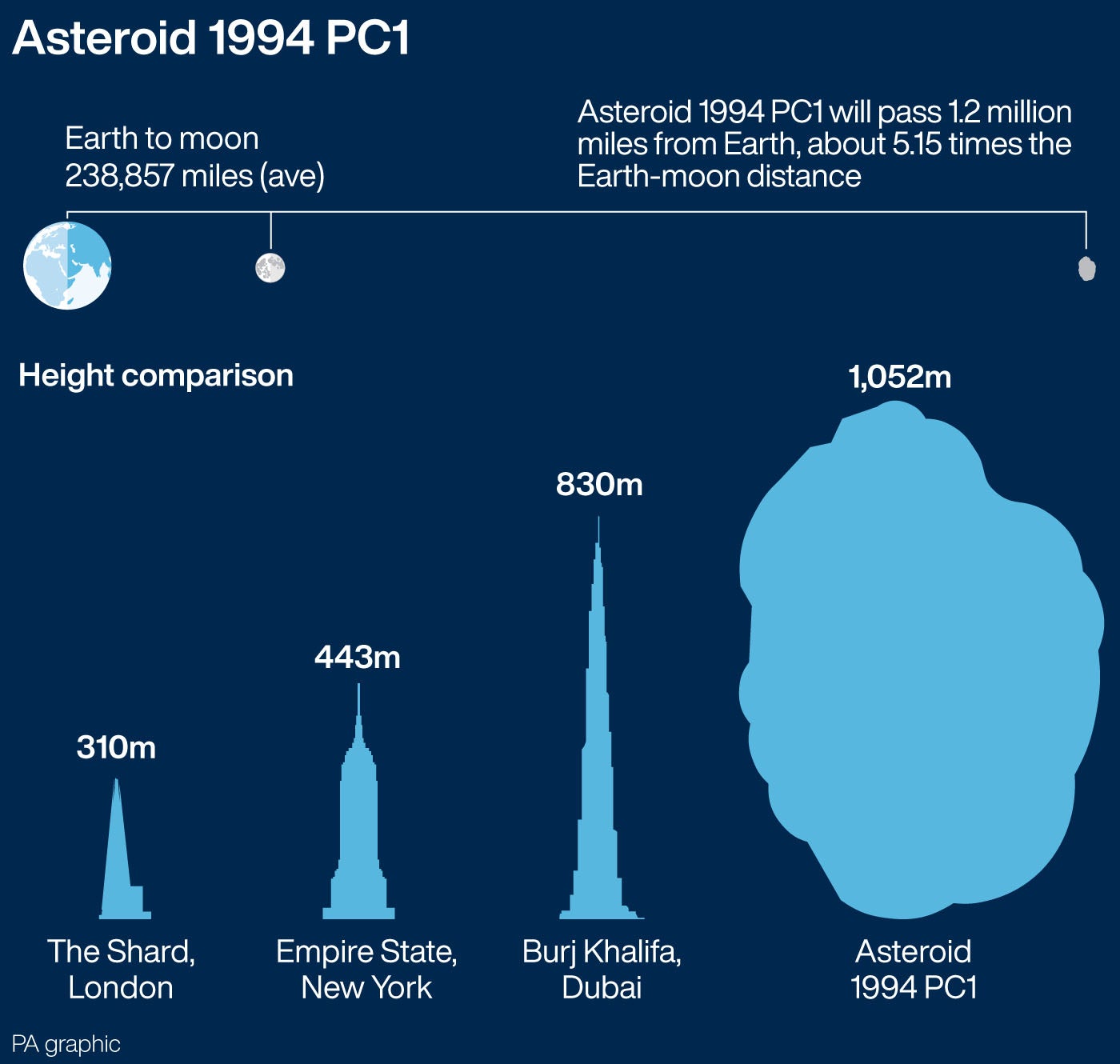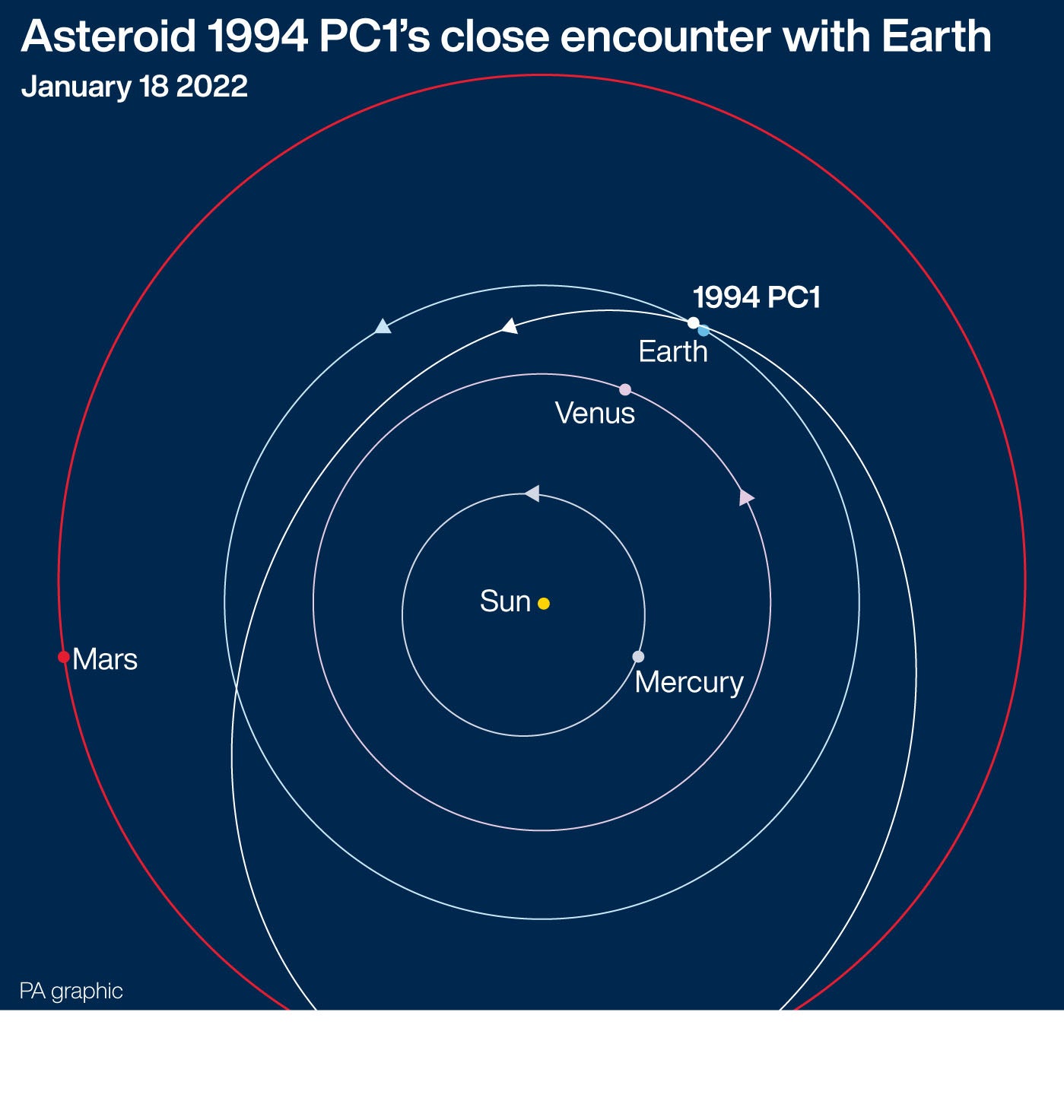Asteroid bigger than any building on Earth to soar past the planet
Called 7482 (1994 PC1), the asteroid is more than a kilometre wide.

Your support helps us to tell the story
From reproductive rights to climate change to Big Tech, The Independent is on the ground when the story is developing. Whether it's investigating the financials of Elon Musk's pro-Trump PAC or producing our latest documentary, 'The A Word', which shines a light on the American women fighting for reproductive rights, we know how important it is to parse out the facts from the messaging.
At such a critical moment in US history, we need reporters on the ground. Your donation allows us to keep sending journalists to speak to both sides of the story.
The Independent is trusted by Americans across the entire political spectrum. And unlike many other quality news outlets, we choose not to lock Americans out of our reporting and analysis with paywalls. We believe quality journalism should be available to everyone, paid for by those who can afford it.
Your support makes all the difference.A giant asteroid, bigger than any building on Earth, is expected to soar past the planet on Tuesday.
Called 7482 (1994 PC1), the asteroid is more than a kilometre wide at 1,052m (3,451ft).
Its size means it is bigger than the Burj Khalifa in Dubai which, at 830m (2,723ft), is the world’s tallest building.
But the asteroid poses no threat to Earth and at its closest will pass more than five times the moon’s distance from the planet.
Robert McNaught discovered asteroid (7482) 1994 PC1 at the Siding Spring Observatory in Australia on August 9 1994.

Nasa’s Asteroid Watch Twitter account posted: “Near-Earth #asteroid 1994 PC1 (~1 km wide) is very well known and has been studied for decades by our #PlanetaryDefense experts.
“Rest assured, 1994 PC1 will safely fly past our planet 1.2 million miles away next Tues, Jan 18.”

The agency’s Planetary Defence Coordination Office monitors the skies to find, track, and monitor near-Earth objects.
Nasa is also looking at ways to intercept potentially hazardous asteroids with its double asteroid redirection test (Dart) mission.
The mission aims to prove a spacecraft can autonomously navigate to a target asteroid and intentionally collide with it, smashing it off course.